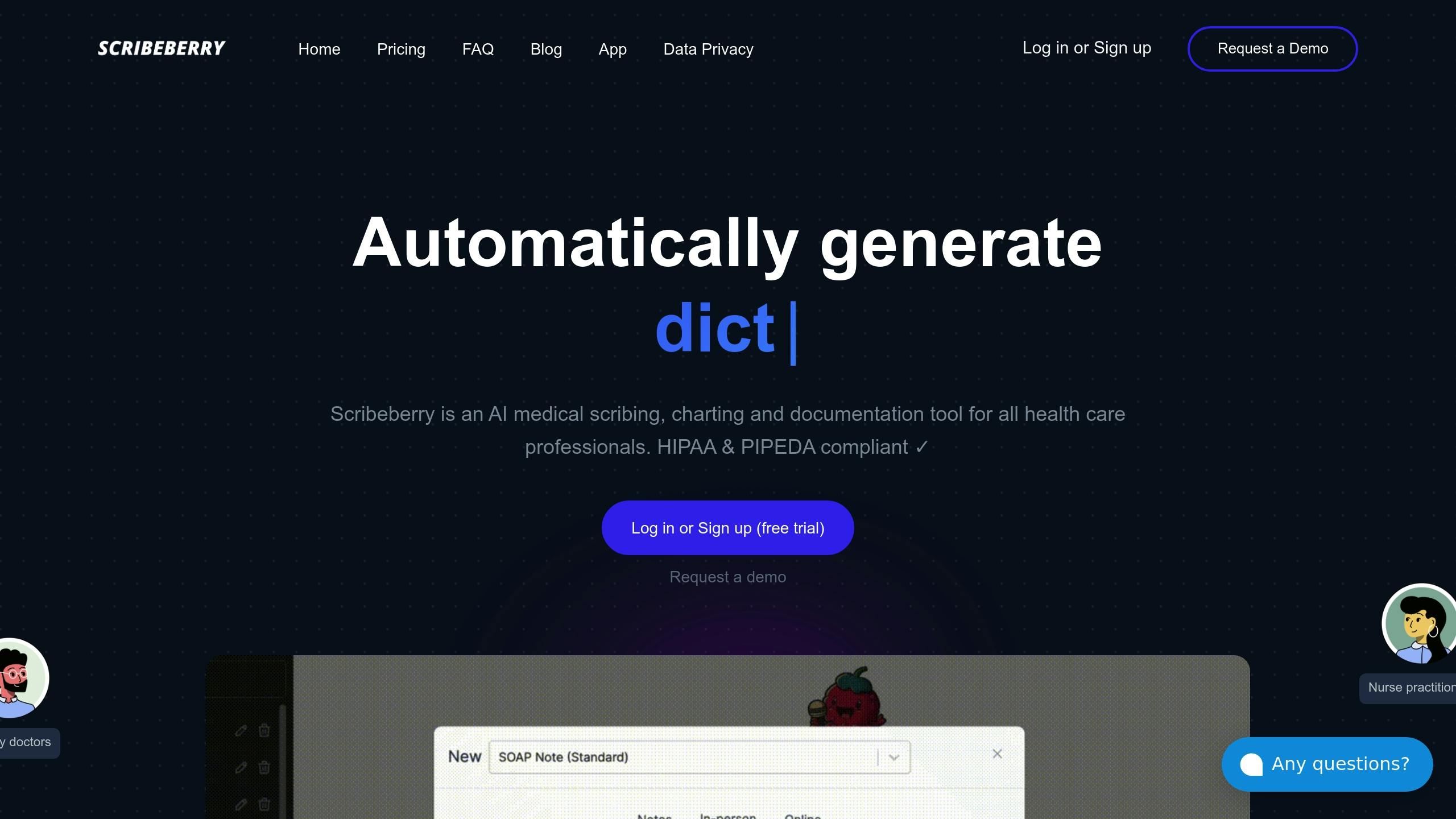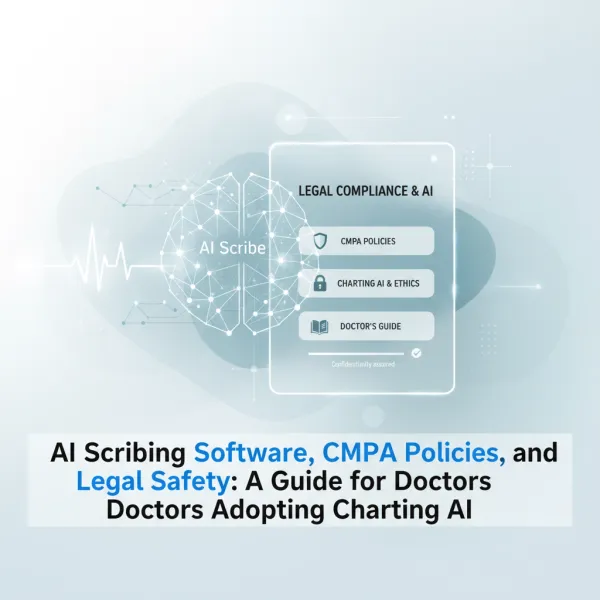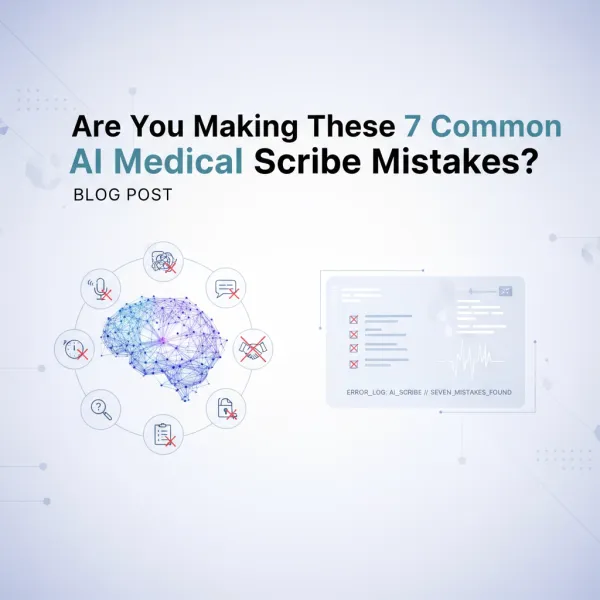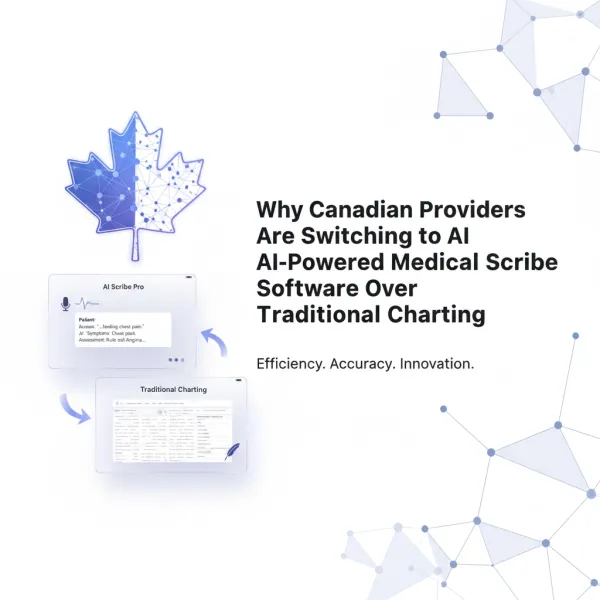SOAP Notes Guide: Tips for Efficient Documentation
Learn effective strategies for writing clear and efficient SOAP notes to enhance patient documentation and care coordination.

SOAP notes are a structured way to document patient care, introduced in the 1960s, and still widely used today. They consist of four components: Subjective (patient-reported symptoms), Objective (measurable clinical data), Assessment (diagnoses and reasoning), and Plan (treatment steps). Writing clear SOAP notes improves diagnostic accuracy, care coordination, and compliance with legal standards.
Key takeaways:
- Efficiency: Using templates and AI tools like Tali AI or Scribeberry can cut documentation time by up to 50%.
- Accuracy: Stick to facts in the Objective section and avoid ambiguous language.
- Compliance: Ensure notes meet HIPAA standards with encryption and proper workflows.
- Tips: Document promptly, use approved abbreviations, and focus on relevant details.
AI-powered tools now streamline SOAP documentation, saving time and reducing errors, so providers can focus more on patient care.
Ideal Medical Scribe Chart - Example Medical Documentation
Writing Clear SOAP Notes
Writing SOAP notes effectively requires balancing detail with efficiency. Studies indicate that using structured documentation templates can enhance note quality by 36.6% while cutting documentation time by 42% [3]. These time savings become even more impactful when paired with AI tools, which are discussed further in Section 3.
Guidelines for Each SOAP Component
Subjective Section
- Include direct quotes from the patient, timelines of symptoms, and relevant negatives.
- Track how symptoms have progressed over time.
- Note any details that help rule out potential diagnoses.
Objective Section
Stick to observable, measurable data without interpretation. This might include:
- Exact vital signs.
- Findings from physical exams.
- Results from lab tests and imaging.
- Scores from standardized assessments.
Assessment Section
Clearly explain your clinical reasoning with evidence from the documentation:
- Rank diagnoses by priority.
- Add ICD-10 codes where applicable.
- Link clinical findings to your conclusions.
- Include differential diagnoses when relevant.
Plan Section
Lay out actionable and detailed next steps:
- Specify medications (including name, dose, frequency, and duration).
- List any tests or procedures ordered.
- Document patient education efforts.
- Provide follow-up instructions that are clear and concise.
- Include contingency plans if necessary.
Mistakes to Avoid
Avoid these common pitfalls to keep your notes accurate and professional:
- Too much detail: Focus on information that impacts decisions.
- Ambiguous language: Stick to standardized medical terminology.
- Copy-paste errors: Double-check any reused content for accuracy.
For high-quality notes:
- Keep the Objective section free of subjective interpretations.
- Finish notes within 4 hours of seeing the patient to avoid memory gaps.
- Use only approved abbreviations.
- Ensure the information flows logically.
AI tools can streamline documentation, especially for complex cases, by automatically incorporating standardized assessments [1].
AI Tools for SOAP Documentation
AI-driven scribing tools make SOAP documentation faster and more accurate by using structured formats and reducing errors [2].
AI Medical Scribe Functions
AI medical scribes use a mix of advanced technologies to simplify documentation. Voice recognition software accurately converts spoken language into text, even for complex medical terms [2]. With Natural Language Processing (NLP), free-form dictation is automatically organized into the SOAP format, saving time and effort. Additionally, smart templates adjust to the requirements of various medical specialties and practices [2].
A great example is Massachusetts General Hospital. In 2022, their use of DAX technology cut documentation time in half and increased patient satisfaction by 20% [2].
Scribeberry Tools and Uses

Scribeberry's AI platform is tailored for SOAP documentation, offering features like:
- Real-time charting for multiple patients
- Templates that adjust to specific specialties
- Voice-powered population of EHRs
- Automated coding recommendations
The platform ensures HIPAA compliance with end-to-end encryption and works seamlessly with any EHR system, automatically generating PDFs or populating forms.
Manual vs. AI Documentation Methods
| Aspect | Manual Documentation | AI-Assisted Documentation |
|---|---|---|
| Time Efficiency | 3+ hours daily on documentation | Automated workflow |
| Completeness | May miss fields | Auto-prompts ensure thoroughness |
| Integration | Manual data entry | Direct EHR integration |
While these tools improve workflow and save time, their use must align with legal and security standards, which will be discussed in the next section.
Meeting Legal and Security Standards
When using AI documentation tools, staying compliant requires both technical safeguards and adjusting workflows. Here's what to focus on:
Legal Requirements Checklist
Healthcare organizations need solid documentation protocols to meet regulatory standards. A checklist for SOAP notes might include:
| Documentation Requirement | How to Implement |
|---|---|
| Patient Identification | Use unique IDs, photo verification |
| Provider Authentication | Multi-factor authentication, digital signatures |
| Timestamping | Automated date and time tracking |
| Timely Completion | Ensure completion within 24 hours |
These steps work best when paired with the built-in security features of AI tools, as highlighted in Section 3.
Data Protection Methods
To align with HIPAA standards, users of AI documentation tools need robust security measures. Key practices include:
- Strict access controls to verify user identity
- Real-time threat detection to spot and respond to risks
- Encrypted data transmission to keep information secure
AI platforms should handle these measures directly. For instance, Scribeberry uses AES-256 encryption, a standard we discussed earlier.
Healthcare providers must also ensure HIPAA compliance by implementing:
- End-to-end encryption with TLS 1.3 for secure data transfer
- Continuous monitoring to detect threats in real time
- Regular security tests to uncover and address vulnerabilities
Solving Documentation Problems
Even with compliance safeguards in place, healthcare professionals still face practical challenges in maintaining accurate and efficient documentation.
Managing Conflicting Patient Data
Sometimes, patient-reported symptoms don't match clinical findings, making clear and precise documentation essential. Studies indicate that up to 50% of patient-reported symptoms may differ from clinical observations [2]. Here's how to address these inconsistencies:
| Conflict Type | Resolution Strategy | Example |
|---|---|---|
| Pain Assessment | Record both subjective reports and observations | "Patient reports no pain (0/10), but exhibits guarding behavior during abdominal exam" |
| Medication Adherence | Document patient statements alongside verification data | "Patient states full medication compliance; pharmacy records show 60% fill rate" |
| Vital Sign Variations | Include all measurements with context | "BP 140/90 (nurse, 9:00 AM), 130/85 (physician, 9:30 AM after rest period)" |
Quick Documentation Tips
With over 78% of providers dedicating more than 10 hours weekly to documentation [5], these tips can help streamline the process while retaining accuracy:
- Document at the point-of-care using voice recognition tools to create drafts.
- Prioritize clinical relevance by using approved abbreviations and avoiding unnecessary details.
- Leverage AI-generated templates for frequently encountered cases to save time.
For even greater efficiency, consider integrating these practices with AI scribes (discussed in Section 3).
Team Documentation Methods
A role-based approach to documentation can improve efficiency and clarity. Assigning specific SOAP components to team members ensures everyone contributes effectively:
- Primary care physicians handle the Subjective and Assessment sections.
- Nurse practitioners focus on Objective data.
- Specialists provide input for the Plan section.
- Team leaders oversee and finalize the notes [3].
This collaborative process works particularly well when paired with AI documentation tools that track inputs from all team members. By combining human oversight with automated processes, this system ensures thorough and accurate documentation that meets both clinical and legal standards.
Summary
Handling SOAP documentation effectively requires updated approaches. The AI-powered workflows highlighted in this guide merge clinical expertise with advanced technology to improve this critical task.
Writing notes right after patient visits ensures accuracy and minimizes memory-related mistakes. Using standardized medical terms while keeping the language clear and concise promotes consistent and professional documentation.
FAQs
How to write an effective SOAP note?
Each component of a SOAP note serves a specific purpose. Here's a quick breakdown:
- Subjective: Include the patient's own words. For example, "Patient reports severe headache for 3 days, describing it as 'throbbing pain behind the eyes.'"
- Objective: Document measurable data such as vital signs, lab results, or physical exam findings.
- Assessment: Provide a professional interpretation based on the evidence.
- Plan: Outline treatment steps, prescribed medications, and follow-up instructions.
How to improve SOAP note efficiency?
You can save time without compromising accuracy by adopting these strategies:
- Practice bedside charting to capture information immediately.
- Use AI-assisted tools (see Section 3 for examples).
- Try voice dictation technology for faster input.
- Develop templates for common medical conditions.
- Utilize standard medical abbreviations.
Research indicates these methods help reduce documentation time while maintaining high-quality standards [3].
How long should it take to write a SOAP note?
AI tools, such as those highlighted in Section 3 (e.g., Scribeberry AI), can significantly cut down the time it takes to write SOAP notes while ensuring quality. The key is combining efficient workflows with the right technology
Can ChatGPT write SOAP notes?
AI tools like ChatGPT can assist in creating SOAP notes, but they should complement - not replace - human expertise. Healthcare professionals must review and adjust AI-generated notes to ensure accuracy and personalization [6]. For more secure and context-aware clinical documentation, specialized tools discussed in Section 3 are better suited.
The success of AI in this context lies in balancing automation with professional oversight, as explained in the Manual vs. AI Documentation section.



